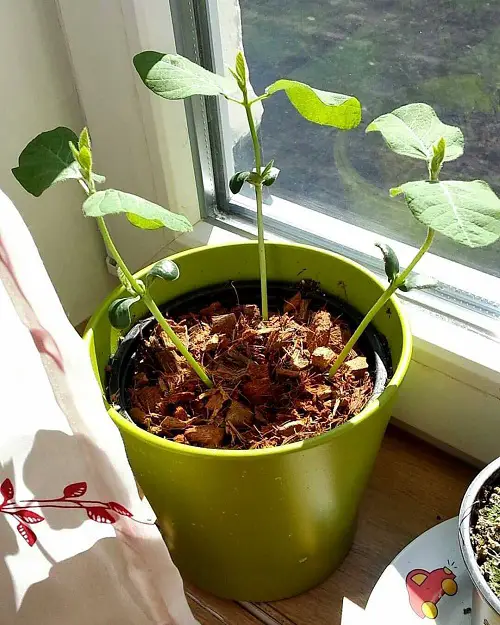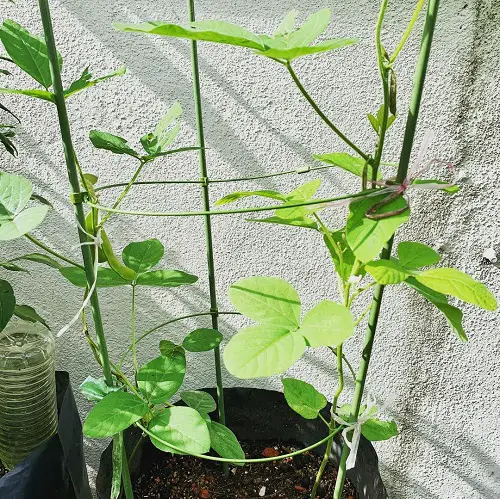Discover How to Grow Edamame, the healthy and protein-packed snack that’s easy to cultivate in your own backyard.

Looking for a healthy and easy-to-grow snack that’s packed with protein and flavor? Look no further than our topic on “How to Grow Edamame!” These delicious little beans are a staple in many Asian cuisines, and they’re surprisingly simple to grow in your own backyard. Growing Edamame is a fun and rewarding project that’s sure to yield tasty results!
Learn How to Grow Pinto Beans
What is Edamame?
It’s a delicious and highly nutritious plant that’s definitely worth growing in your garden. Edamame is actually the immature and green form of soy, harvested young for use in snacks and recipes.
Not only is it a tasty and protein-rich snack, but it’s also a valuable edible plant that can be grown to maturity for use in tofu and other soy products. So why not give edamame a try and enjoy the benefits of growing your own healthy and delicious snack?
USDA Zones: 4 – 11
Propagation Method: Seeds
Difficulty: Easy
Soil pH: 6 – 7.5
Other names: Baby soybean, sweet bean, vegetable soybean, garden soybean, immature soybean, edible soybean, green soybean, beer bean, Japanese soy, fresh soybean
Look at the Purple Beans for the Garden
Edamame Nutrition Profile
Edamame is a nutritious and versatile snack food or side dish. It is a good source of plant-based protein, fiber, and various vitamins and minerals. One cup (155 grams) of cooked edamame provides the following nutrients:
- Calories: 188
- Protein: 17.5 grams
- Carbohydrates: 8.5 grams
- Fiber: 5.1 grams
- Fat: 8.1 grams
- Vitamin A: 5% of the RDI
- Vitamin C: 9% of the RDI
- Vitamin K: 28% of the RDI
- Folate: 17% of the RDI
- Manganese: 22% of the RDI
- Calcium: 7% of the RDI
- Iron: 10% of the RDI
- Magnesium: 21% of the RDI
- Potassium: 16% of the RDI
- Phosphorus: 18% of the RDI
- Zinc: 10% of the RDI
Requirements for Growing Edamame Beans
Sunlight
Edamame plants require full sun for at least 6 hours per day, but they can tolerate some partial shade. Make sure to choose a location for planting that gets plenty of direct sunlight to promote healthy growth.
Soil
Edamame beans can grow in a variety of soil types, but they prefer well-draining soil that is rich in organic matter. Adding compost or farm manure to the soil before planting can help improve soil fertility and structure.
The ideal soil pH range for edamame is 6.0 to 7.5. Avoid planting in cold, wet, or waterlogged soil, which can inhibit germination and growth.
Water
They require regular watering to keep the soil moist, especially during hot and dry weather. However, be careful not to overwater, which can cause the roots to rot. A good rule of thumb is to water the plants deeply once a week or more often during dry spells.
Temperature
Edamame beans prefer moderate temperatures between 60 and 85 °F (15 – 26 °C). Plant edamame in the late spring or early summer for growing edamame the best and once the soil temperature has reached at least 60 °F.
Humidity
They can tolerate a range of humidity levels, but high humidity can increase the risk of fungal diseases. Proper spacing, good air circulation, and avoiding overhead watering can help prevent fungal issues.
Edamame Beans Care

Fertilizer
Edamame Beans is a type of soybean that is a versatile and nutrient-rich addition to any meal. Fertilizing edamame is important to ensure a healthy crop.
For best results, use a balanced fertilizer with a ratio of 10-10-10 or 12-12-12. Apply the fertilizer around the base of the plants at a rate of 1 to 2 pounds per 100 square feet.
Do not apply the fertilizer directly to the plants. Reapply the fertilizer every four to six weeks throughout the growing season.
Mulching
Mulching with organic matter such as straw, leaves, or grass clippings can help retain soil moisture, suppress weeds, and improve soil fertility.
Apply a layer of mulch around the base of the plants, being careful not to cover the stems while growing edamame.
Pests and Diseases
Edamame plants are relatively pest and disease-free, but they can be susceptible to certain problems in certain conditions. Aphids, mites, and stink bugs may attack the plants, while fungal diseases such as powdery mildew and root rot can occur in wet and humid conditions.
To prevent these issues, make sure to provide good air circulation around the plants and avoid over-watering. If necessary, treat the plants with an organic insecticide or fungicide.
Harvesting Edamame Beans
Harvest edamame pods when they are plump and the beans are almost touching the sides. For the best flavor and texture, harvest the pods as soon as they are mature and bright green in color.
Once harvested, the pods can be steamed or boiled for a few minutes and then seasoned with salt or other spices.




Where can I purchase soy bean seeds?